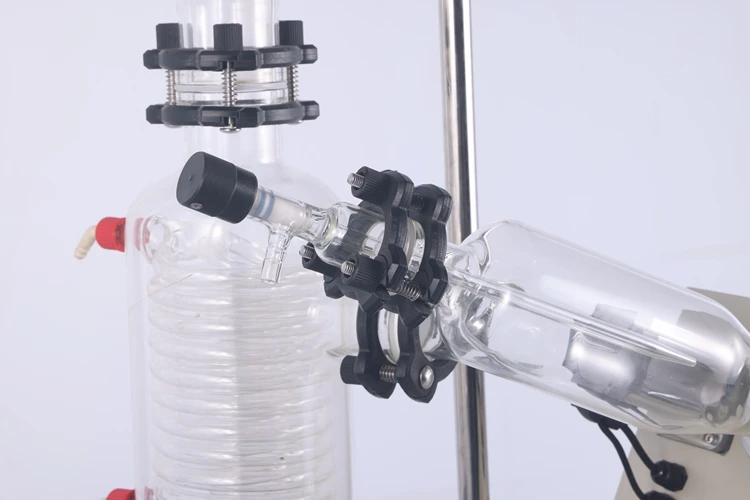Rotary evaporator distillation is a sophisticated technique used in chemical separation that has dramatically expanded the possibilities within the field of chemistry. At its core, rotary evaporation involves a continuous process of separating liquids from solids or other liquids based on differences in boiling points, utilizing a rotating flask, a heating bath, and a condenser. This process is particularly advantageous when dealing with heat-sensitive materials, as it operates under reduced pressure to lower the boiling points of the substances involved, thus minimizing thermal degradation. By employing a rotary evaporator, chemists can achieve more efficient and precise separations, ultimately pushing the boundaries of chemical separation technologies. The rotary evaporator consists of several key components: the evaporation flask, which rotates to increase the surface area of the liquid; the heating bath, which provides controlled heat to facilitate evaporation; the condenser, which cools and collects the vapor; and the vacuum system, which reduces the pressure inside the system to lower the boiling points of the substances.

The rotation of the flask ensures that the liquid is evenly distributed and continually exposed to the heated surface, enhancing the efficiency of the evaporation process. This constant rotation also prevents bumping and splashing, which could otherwise lead to loss of material or inefficient separation. One of the primary advantages of rotary evaporator distillation is its ability to perform gentle distillations. Traditional distillation methods often require high temperatures that can cause decomposition of sensitive compounds. By operating under reduced pressure, the rotary evaporator lowers the boiling points of the compounds, allowing for distillation at lower temperatures. This is particularly useful for separating natural products, pharmaceuticals, and other delicate materials that would otherwise be prone to degradation under standard distillation conditions. Furthermore, the GWSI rotary evaporator enables the efficient separation of solvents from solutes, which is essential in many chemical processes.
For instance, in the extraction of essential oils from plant materials, the rotary evaporator can quickly and effectively remove the solvent while preserving the integrity of the volatile compounds. Similarly, in the pharmaceutical industry, it is employed to concentrate solutions and purify compounds, contributing to the development of new drugs and therapeutic agents. The integration of rotary evaporator technology with other analytical and preparative techniques has further advanced its utility. For example, when combined with chromatographic methods, it allows for the efficient recovery of solvents used in the separation process, enhancing overall process efficiency. Additionally, modern rotary evaporators are equipped with digital controls and automated systems that streamline operations, improve reproducibility, and reduce the need for manual intervention. In conclusion, rotary evaporation distillation represents a significant leap forward in the field of chemical separation, offering unparalleled precision, efficiency, and gentleness. By enabling the distillation of heat-sensitive materials under reduced pressure, it has expanded the range of applications and improved the quality of separations in both research and industrial settings.


